Fri, 02 August, 2024
A team from TWI were invited to visit a site on the Isle of Grain in Kent to see a liquefied natural gas (LNG) storage tank that is currently under construction.
The site, which is operated by Grain LNG (A National Grid company), is undergoing three workstreams to expand capacity and enhance infrastructure under the umbrella of their Capacity 25 (or ‘CAP 25’) project.
The visiting TWI team included Membership Development Manager Amina Salman, Principal Project Leader Chi Lee, Welding Engineer Geri Van Krieken, and Senior Technician Michael Hall. They were met at the site by CAP 25 project Quality Manager Luke Hearn, who himself both once worked and trained at TWI.
Also in attendance were Matt Astbury (HSEQ and Engineering Manager, NationalGrid), Sebastien Vicens (Entrepose Contracting Head of Welding Department), Landry Garandeau (Technical Director for Tissot Industry), Armandino Afonso (Production Manager, Tissot Industry), and Miguel Cardoso (Quality Manager, Tissot Industry).
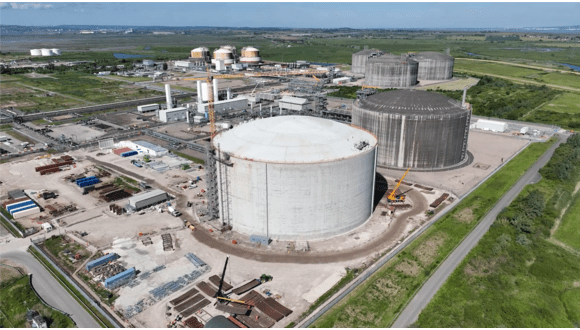
What is an LNG Storage Tank?
An LNG tank is a specialised storage tank used for the storage of liquefied natural gas. They can be in-ground, above ground or in LNG carriers such as shipping tankers.
Above-ground LNG tanks are full containment storage systems designed to contain the liquid product and control the vapour release in the event of product leakage from its primary liquid container. The primary liquid container for the tank at Grain LNG is made from 9% Ni Steel, with a carbon steel vapour barrier and a concrete secondary container. The insulating materials used in the annular space between the 9% Ni inner tank and the vapour barrier keep LNG at temperatures of around -162 °C (-260 °F). The LNG tank at Grain LNG has further protection built-in with the addition of Thermal Corner Protection (TCP), which is also made from 9% Ni, and is designed to prevent uncontrolled cracking in the base wall connection, or in the base slab if the primary containment fails. In-ground tanks can be either lined or unlined. When unlined, the low temperature of the LNG itself freezes the surrounding soil to provide effective containment. The piping that is connected to LNG tanks is routed through the top of the vessel to mitigate against a loss of containment should there be a piping breach.
LNG storage tanks use a technique called auto-refrigeration to maintain a constant temperature. This involves allowing boil off gas to escape from the tank, which keeps the pressure, and thereby the temperature, in the tank constant.
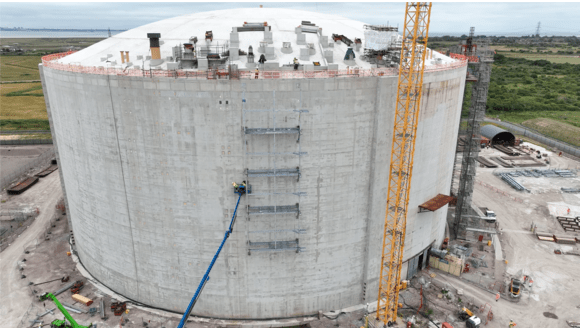
CAP 25 at Grain LNG
Due for completion in 2025, CAP 25 combines three different workstreams; (1) the construction of the new storage tank, (2) ‘Main Site Works’ (MSW) to expand and upgrade the existing infrastructure on site to accommodate the new tank, and (3) a ‘Phase One Re-life’ programme of work to extend the life and operational availability of existing assets.
This work follows three previous phases of expansion at the Grain LNG import terminal, which were commissioned in 2005, 2008, and 2010 respectively.
The work is all being undertaken with great care for the local environment, which includes areas of marshland and rough grasslands that support wading birds, water voles, reptiles, amphibians, wildfowl, and more.

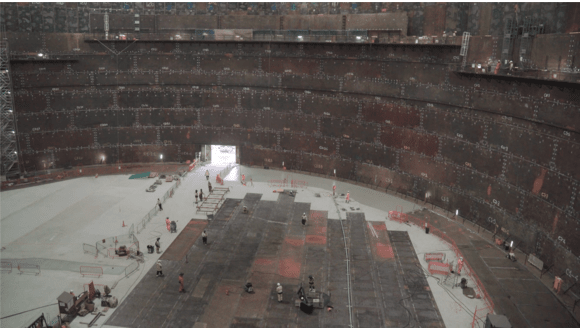
CAP 25 has brought together a multi-disciplinary group of partners and suppliers, including civil, mechanical and electrical engineers, as well as experts in quality, procurement and control systems, project managers, and construction contractors.
The TWI team was invited to Grain LNG to see the construction of the new 190,000m3 (working capacity) LNG storage tank, which will be the fifth of its size on the site once completed, although there was also tour of the other ongoing works.
The Storage Tank
With a working capacity of 190,000m3 of LNG, the storage tank has an outside diameter of 92.40 metres and a height of 50.40 metres and is comprised of a 9% nickel steel inner tank with a pre-stressed concrete outer shell, poured in-situ using slipforming.
The tank is large enough to fit the Royal Albert Hall (Outside diameter = 82.90 metres, height = 50.01 metres) inside, with the extra capacity it brings online allowing Grain LNG to provide up to 33% of UK gas. The new tank also further improves security of UK energy supply.
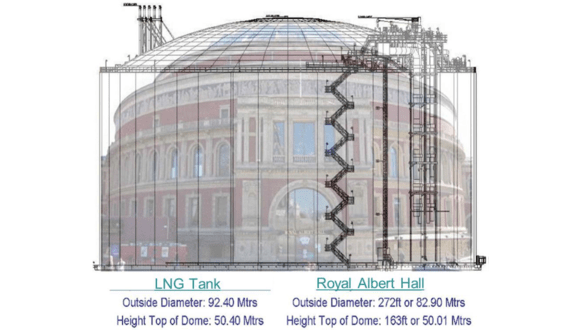
The storage tank construction started in March 2021 with its design based on the previous 190,000m3 working capacity tanks on site except with additional client specifications based upon lessons learnt. The construction is being undertaken in accordance with standards BS EN 14620:2006 and BS EN 1473:2016, as well as to requirements specific to Grain LNG. The construction is a joint venture by EVT (comprised of Entrepose Contracting, VINCI Construction Grands Projects, and Taylor Woodrow) and involves 14 different critical stages, from laying the piling foundations for the tank base through to its first fill with LNG.
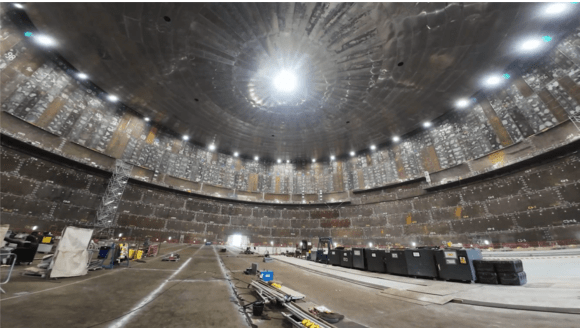
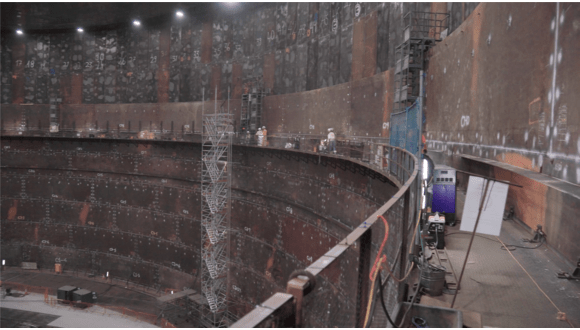
The critical stages in the storage tank programme of work were set out as follows:
- Piling foundations / tank base
- Outer tank concrete wall slipform
- Domed roof assembly including suspended deck
- Domed roof air raise including suspended deck
- CS wall and bottom liner installation
- Horizontal and vertical post tensioning
- Inner tank concrete ringbeam
- Load-bearing cellular glass bottom insulation
- 9% Ni TCP, secondary bottom and primary inner tank wall and bottom installation
- Tank top steelwork, piping, mechanical equipment, EC&I installations
- Hydrotesting, wash down and drying inner tank
- Installation of perlite powder in annular space
- Initial cooldown during commissioning
- First fill
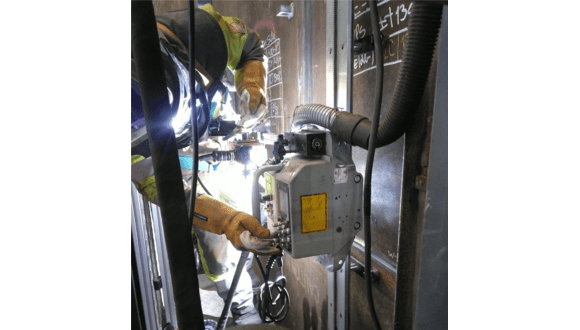
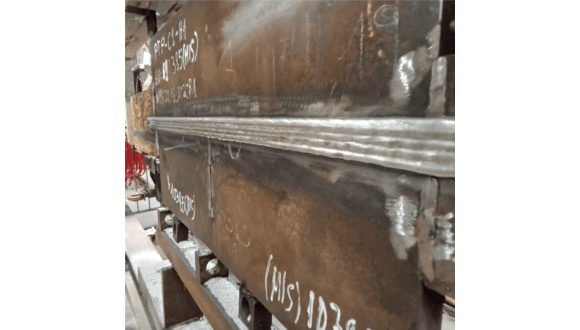
TISSOT Industrie is an internationally recognised French company, who are experts in heavy boiler making and in the realisation of tailor-made industrial projects. Their experience and the flexibility of their organisation allows them to meet any need for innovation in sectors including renewable energy, oil, chemical, gas, nuclear sectors, and more. Tissot Industrie UK Limited (subsidiary) are the contractor responsible for all mechanical activities associated with the inner tank. TISSOT utilise the welding techniques listed below, most notably sub-arc welding (SAW) in the PC (horizontal) position for all circumferential inner tank shell plate welds utilising equipment that hangs over the shell plate, allowing both sides of the joint to be welded at the same time with two operators in constant radio communication.
The welding techniques used across these critical stages of construction include:
- Flux Cored Arc Welding (mechanised and manual)
- Gas Metal Arc Welding
- Submerged Arc Welding
- Shielded Metal Arc Welding
- Tungsten Inert Gas Welding
This included work on the following material grades:
- Steel Grade S355J2
- Type 304 Stainless Steel
- Aluminium Alloy 5083
- X7Ni9 Nickel Steel
Speaking on the ongoing work, Luke Hearn explained, ““To date, the welding of the inner tank has a repair rate of only 0.62%, which is an incredible testament to the ability of the workforce we have on site.”
We were delighted to be invited to the Grain LNG site to see how this work is progressing and discuss the project.